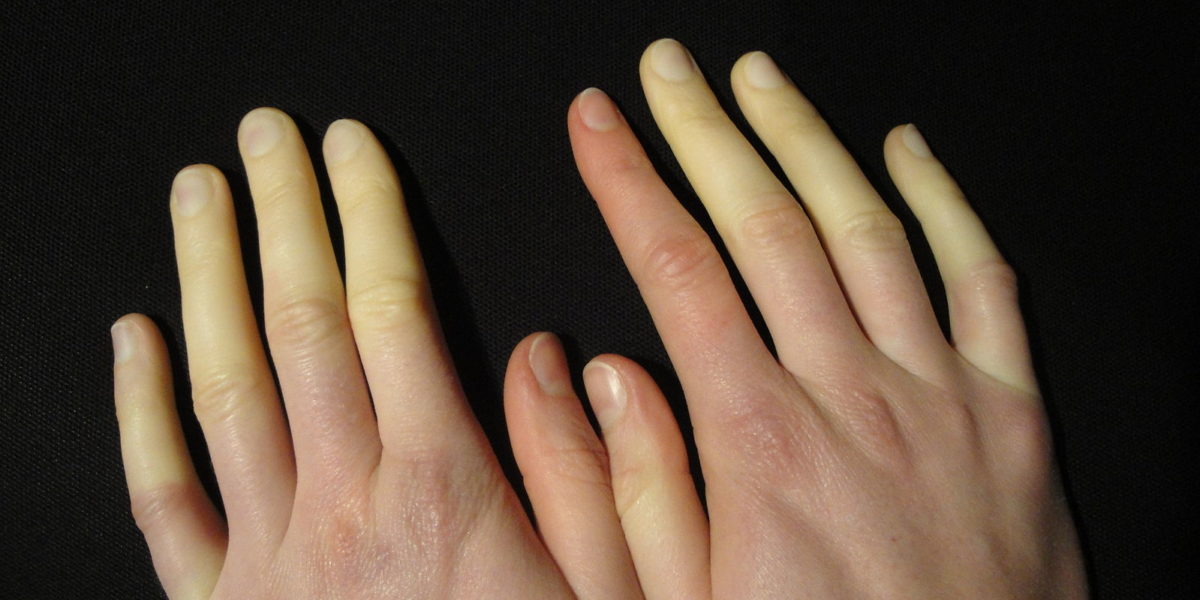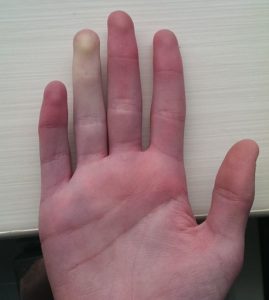Anyone who is familiar with winters that are mainly at temperatures in single digit range knows how crucial gloves are to surviving the tough, frigid weather. If one was to go outside without them, their hands become extremely pale (or sometimes almost blue) and, once back inside, take a bit of time to get back to normal. It’s a tough life, I know, but people with a scleroderma have an even harder time surviving the winter. What is scleroderma, you ask? Scleroderma is an autoimmune disease that causes skin and internal organs to thicken, and if that wasn’t tough enough, a good chunk of people with it also experience secondary Raynaud’s phenomenon, which is an exaggerated vasoconstriction of arterioles in response to cold weather and causes a drop in blood flow. The main, visible outcome from this disease is how the skin whitens and swells. Problems must ensue from the combination of thick skin and lack of blood flow to the extremities, right?

With the thickening of skin, certain properties of skin will noticeably alter when a person has scleroderma. In a recent study, researchers from multiple backgrounds used a new suction device to compare mechanical properties of skin of patients with scleroderma and healthy patients. In the experiment, the researchers used a modified Rodnan skin score to observe skin involvement. This way of testing focuses on how easy it is to pinch skin and witness how it folds. The skin was tested on 3 parts of the body including back, forearm, and shoulder in order to see how the skin not only differs between patients, but to see how different areas have different properties due to activity and use of those parts of the body. To test the skin of the patients, the new suction device used, the BTC-2000, also proved beneficial due to its non-invasive nature that could be used more frequently to produce data. The biomechanical properties of skin depend greatly on the dermis, or skin thickness, due to the properties being derived from witnessing skin response to pressure and stress. The study that these researchers performed supported the idea that mechanical properties of skin are altered negatively when a patient has scleroderma. The major properties that were observed were less extensibility, stretchiness, and a larger resistance to stress.
So the struggle to go outside in the winter is even bigger for people with scleroderma. But in their case, the damage brought on by cold weather is greater and typically more permanent. Similarly, if this is how the disease influences the mechanical properties of the outer skin, the potential impact on internal organs is intriguing.
Featured image by Niklas D, CC BY-SA 3.0 https://creativecommons.org/licenses/by-sa/3.0, via Wikimedia Commons

